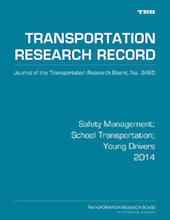Costs and Benefits of Reducing Fuel Burn and Emissions from Taxiing Aircraft
While taxiing, aircraft are powered by their main engines. This paper estimates the potential reductions in costs and emissions that could be achieved with tugs or an electric motor embedded in the landing gear to propel aircraft on the ground. The use of tugs would result in the avoidance of $20/ton of carbon dioxide (CO2) emissions if the measure were adopted for all domestic ights. Estimates of average net savings for airlines vary from $100 per ight at John F. Kennedy International Airport in New York City to a loss of $160 per ight in Honolulu, Hawaii. Electric taxiing would save between $30 and $240/ton of CO2 emissions avoided. Either approach could reduce CO2 emissions from domestic ights in the United States by about 1.5 million tons each year, or about 1.1% of the total emissions in 2006. If the switch were limited to large narrow-body aircraft on domestic service at the busiest airports in the United States, the total reduction in emissions would be 0.5 million tons of CO2 annually, accompanied by savings of $100/ton. Air quality ben- e ts associated with lower main engine use were monetized by using the air pollution emission experiments and policy model and ranged from more than $500 per ight in the New York City area to just more than $20 per ight in the Dallas–Fort Worth, Texas, area. The analysis also demonstrates that emissions reductions from different interventions (e.g., single-engine taxiing and the use of tugs) are often not independent of each other and therefore cannot be combined in a simple way.

